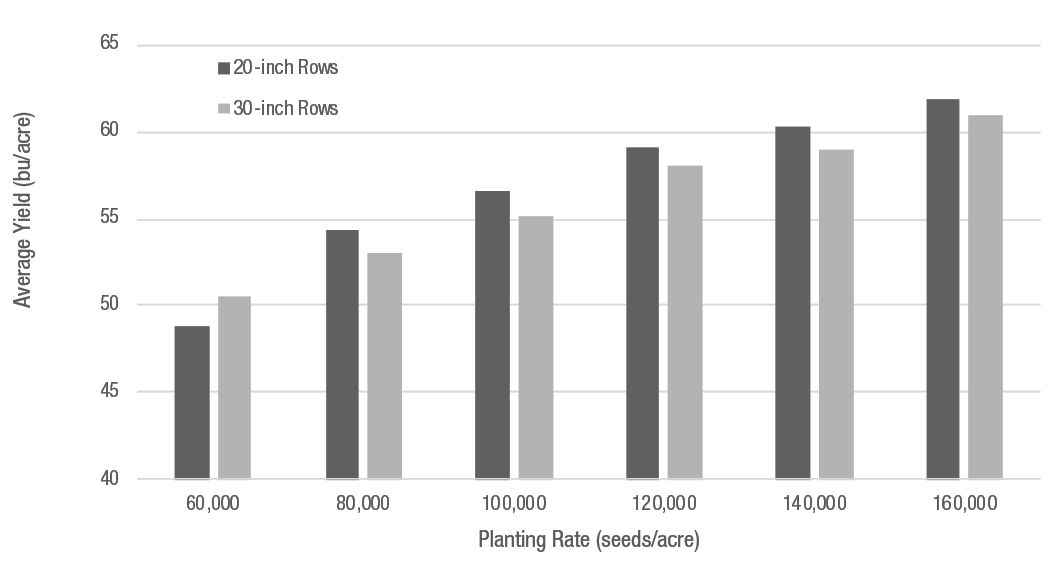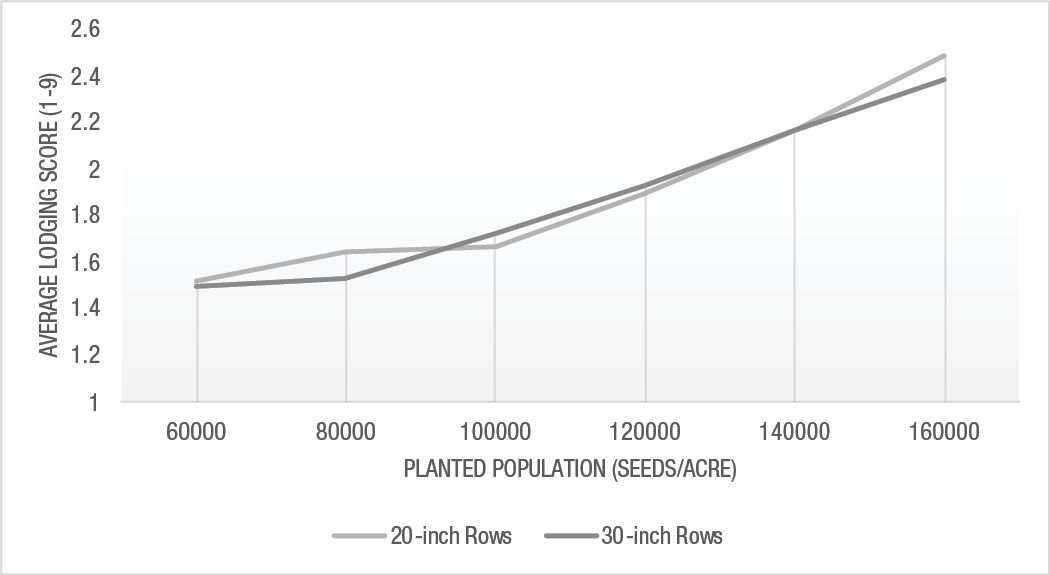2 MIN READ
Effect of Row Width and Planting Rate on Agronomic Characteristics of Soybeans
December 9, 2021
Trial Objective
Improvements in soybean genetics, planting technology, and weed control systems have led to lower planting rate recommendations for soybean growers over the past decade.1
The goal of this research was to determine how planting rate and row spacing interact and affect lodging, disease development, and yield in soybeans
Reasearch Site Details
This research was conducted at Bayer Crop Science FOCUS sites in Illinois counties: Kendall, Dekalb, and Woodford from 2019-2021.
Sixteen 2.2-2.9 maturity group (MG) soybean products were planted, with different products used in different years.
Soybean products were all treated with Acceleron® Seed Applied Solutions STANDARD + ILeVO® Seed Treatment
Seeding rates ranged from 60,000 to 160,000 planted seeds per acre.
Four replications were planted at each location.
Standard fertility and weed management practices were followed.
The 2019 growing season was very cool and wet through early June, leading to delayed planting for many growers. Hot and dry conditions were prevalent in July and August, and excessive rainfall returned in September and October.
In both 2020 and 2021, there was sufficient moisture in the early part of the growing season, but very dry conditions throughout August and into September.

Understanding the Results
On average, over the 3 years in this research, yield increased with increased planting rates (Figure 1).
The highest yielding configuration was 160,000 seeds/acre, planted in 20-inch rows (Figure 1).
Except for the lowest planting rate of 60,000 seeds/acre, soybeans planted into 20-inch rows exhibited higher yields than those planted in 30-inch rows (Figure 1).
Although lodging pressure was low in this trial, we saw increased lodging at higher seeding rates. Row width had no effect on lodging severity (Figure 2).
Disease pressure was also low in this trial. Overall, disease pressure was lower in the 30-inch row spacing than 20-inch and increased with increasing populations (Figure 3).

Figure 1. Average soybean yield at different row widths and seeding rates, 2019-2021.

Figure 2. Effect of row width and planting rate on soybean lodging, 2020-2021.

Figure 3. Effect of row width and planting rate on soybean disease development, 2020-2021.
Key Learnings
Soybean growers can capture additional yield by planting soybeans into 20” rows.
Higher populations lead to increased yield, but also increase the risk of agronomic problems such as lodging and disease development.
Source:
1Pedersen, P. Optimum plant population in Iowa. Iowa State University. https://crops.extension.iastate.edu/files/article/OptimumPlantPop_000.pdf
3011_R23